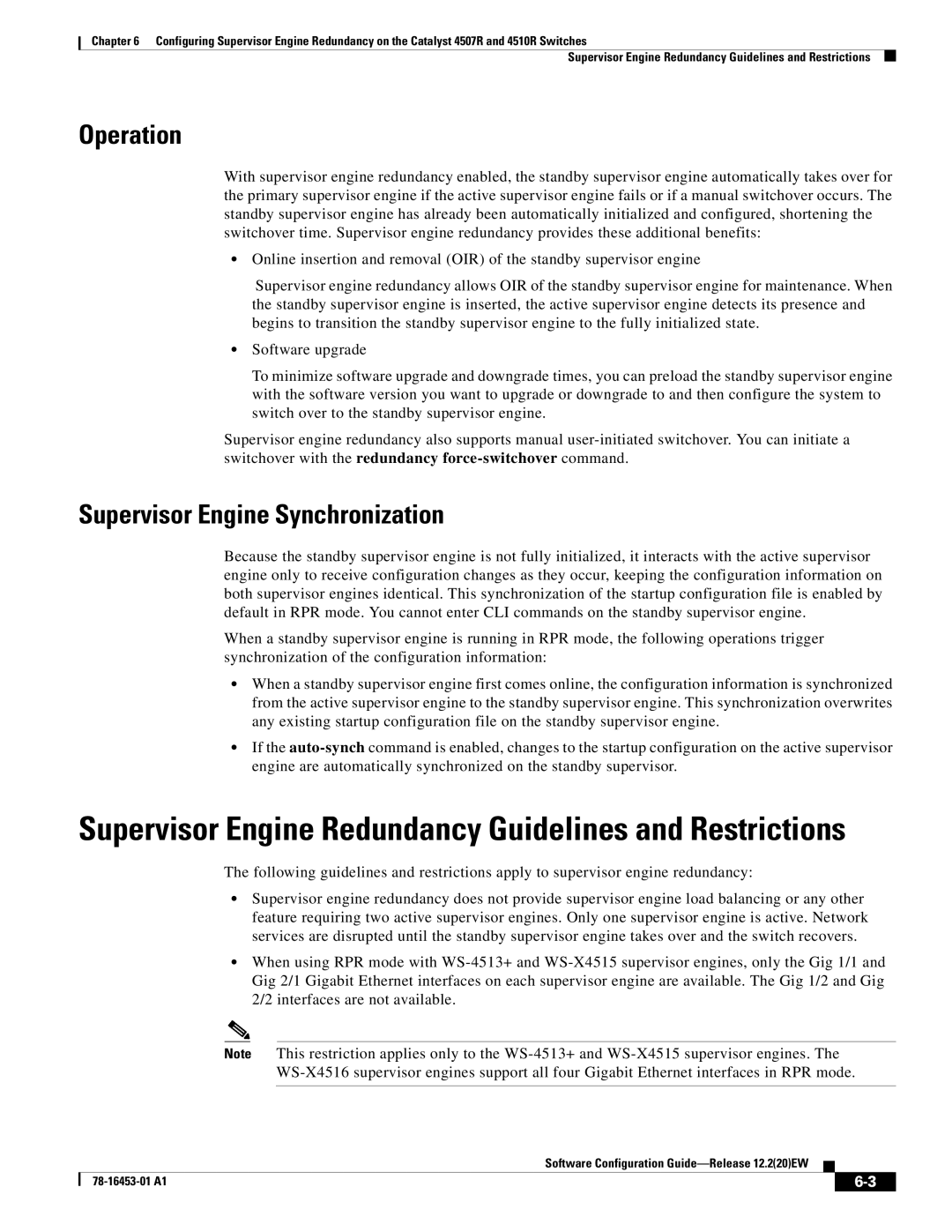
Chapter 6 Configuring Supervisor Engine Redundancy on the Catalyst 4507R and 4510R Switches
Supervisor Engine Redundancy Guidelines and Restrictions
Operation
With supervisor engine redundancy enabled, the standby supervisor engine automatically takes over for the primary supervisor engine if the active supervisor engine fails or if a manual switchover occurs. The standby supervisor engine has already been automatically initialized and configured, shortening the switchover time. Supervisor engine redundancy provides these additional benefits:
•Online insertion and removal (OIR) of the standby supervisor engine
Supervisor engine redundancy allows OIR of the standby supervisor engine for maintenance. When the standby supervisor engine is inserted, the active supervisor engine detects its presence and begins to transition the standby supervisor engine to the fully initialized state.
•Software upgrade
To minimize software upgrade and downgrade times, you can preload the standby supervisor engine with the software version you want to upgrade or downgrade to and then configure the system to switch over to the standby supervisor engine.
Supervisor engine redundancy also supports manual
Supervisor Engine Synchronization
Because the standby supervisor engine is not fully initialized, it interacts with the active supervisor engine only to receive configuration changes as they occur, keeping the configuration information on both supervisor engines identical. This synchronization of the startup configuration file is enabled by default in RPR mode. You cannot enter CLI commands on the standby supervisor engine.
When a standby supervisor engine is running in RPR mode, the following operations trigger synchronization of the configuration information:
•When a standby supervisor engine first comes online, the configuration information is synchronized from the active supervisor engine to the standby supervisor engine. This synchronization overwrites any existing startup configuration file on the standby supervisor engine.
•If the
Supervisor Engine Redundancy Guidelines and Restrictions
The following guidelines and restrictions apply to supervisor engine redundancy:
•Supervisor engine redundancy does not provide supervisor engine load balancing or any other feature requiring two active supervisor engines. Only one supervisor engine is active. Network services are disrupted until the standby supervisor engine takes over and the switch recovers.
•When using RPR mode with
Note This restriction applies only to the
|
| Software Configuration |
|
| |
|
|
| |||
|
|
|
| ||
|
|
|
| ||
